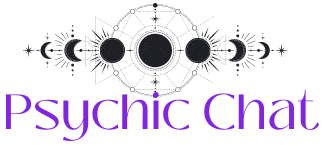Nicholas Vince, best known as The Chatterer Cenobite in Hellraiser and Hellbound: Hellraiser II, talks to William Bove about his experiences in Horror Cinema, his inspirations and his latest projects, including the drama documentary I AM Monsters!

There are many visions of hell – some see a bare, ruthless wasteland of fire and sulfur, where every soul suffers. Others imagine a frozen abyss, an eternity of ice and loneliness.
But in HellraiserHell is endless halls and shady corridors, filled with fear. Strange sounds and ghostly wails reach out to hug you. Yet you are not alone. A light blue light seeps into the darkness. The walls and floors crack while a spooky, innocent melody floats through the air, forms that is torment or pleasure – depending on why you started seeing Leviathan.
You need a guide in these horrors. A figure comes out of the shadows behind you, bathes in a sickly light yellow glow. You know he sees you. Do you know because you can hear him chat.
But don’t worry – you can escape hell. You just need Nicholas Vince to show you the way.
There is a peaceful cemetery where he can take you with. A where the dead do not stay that way, where they live with the moon. But be careful – they must accept you first.
Nicolas Vince: I am Monsters Interview
William Bove: Proper yourself and give everyone a quick overview of your latest project.
Nicolas Vince: Hello, my name is Nicholas Vince, and I played the Chatterer Cenobite in Hellraiser and Hellbound: Hellraiser II. I also depicted Kinski, the ‘Moon Face’, and a Berserker (not credited) in night -brower.
My last project, which lasted almost four years to bring Blu-ray, is that I am samples! -A full drama documentary based on my one-man show of the London Horror Festival and Las Vegas in 2019. It is available as a Blu-ray of a Limited-Edition Collector on Darkrifthorror.com or with a dedication of Nicholasvince.com.
What were the inspirations behind I AM Monsters! And the chattering hour?
I am monsters! was inspired by my time as a patron of the London Horror Festival, the largest and longest-running festival in live horror version. Looking at single shows encouraged me to put together my stories about making Hellraiser, Hellbound and Night wide, while he also explores my lifelong love for monsters and what it means to be one.
An important moment in the film is my conversation with Clive Barker about my teenage experiences, which influenced the design of the chatterer.
The chattering hour was a Lockdown project and I am my manager, Chris Roe, grateful for producing it. I had the opportunity to interview fascinating people such as Traci Lords, Jonathan Breck, Caroline Munro and Malcolm McDowell. We planned to breathe new life into the show this year, but the Branden by Los Angeles had hit many of our potential guests.
In Hellraiser and Hellbound: Hellraiser II you played the CHATTER CENOBITE. Can you tell us about its origin?
The design of the chatterer came from a conversation I had with Clive Barker, which I explore in depth in I AM Monsters!.
His background story intrigued me – how does a seemingly young boy end up in hell? Over the years, this idea grew into a prayer of Desire, a short story that I wrote for an anthology by Clive’s Publishing Company in 2016. That story will also be the title piece of my third horror short story collection, which I am currently working on.
Is there a general theme in your work? Does a leading motive come up again?
I am fascinated by the idea that monsters are in the core human. If I play a monster, I always ask: can I be this?
There was a TV series with the slogan: “We can all become murderers; it just takes a very bad day.” I believe that the same applies to samples – under the right circumstances, someone of us can behave monstrously.
Why did you choose to do night bleeding? Does it reflect you or your experiences?
I grabbed the chance to do night. Working with Clive was exciting again, and this time I had a striking role – although my voice was finally dubbed. That is a long story for another time!
I love the starting point of the film: the “monsters” are actually the good, while the real monsters are the sheriff and the townspeople, the sons of the free.
What do you like best about Hellraiser and Nightbreed?
Hellraiser was my first feature film, so the whole experience was exciting. Designing Clive and the sculpture of Nigel Booth by masking was unforgettable.
It took me about 10 years before I could see Hellraiser as a movie instead of as a collection of memories from the set. When I finally did it, I was struck by how well made it is.
When I started making short films and later I am monsters!, I visited Hellraiser again to study the horror film techniques. A scene that stands out is when Julia hesitates between light and darkness before she commits her first murder – it is a beautifully manufactured moment.
Another highlight was working with the talented make -up artists. Neil Gorton, who designed Kinski in Nightbreed, later founded Millennium FX, the company behind the modern prostheses of Doctor Who. His assistant, Mark Coulier, has since won three Oscars for Makeup.
Do you have a favorite movie in which you acted or a favorite book you have written?
Hellraiser, of course, for film. For fiction, prayers of desire – so far! It’s like asking a parent to call their favorite child.
I also cherish a framed fan letter on my study wall and quoted something that I wrote for Hellraiser Comics. (See question 11.)
What is interested in acting and writing?
Tell stories. Whether it is about writing or working together on a film set, it all comes down to the joy to tell a story.
Telling your own stories is a fundamental human need, and I am lucky to still act and write. My goal for 2025 is to release more fiction and scenarios.
What do you like about horror?
If it is done intelligently, horror is about many more than spring ships. Although making the audience jump is cathartic, the real power of horror in exploring great themes – life, love, death and sex is.
What is the most difficult part of acting? Has one of your rolls challenging you?
Doing well, whether it’s the first take or repeatedly in theater. I partially avoided theater because I feared to get bored during a long term.
Physically, Hellraiser was heavy – working without hearing, speaking or seeing it. There is also the time that I almost died on Hellbound.
Furthermore, the fear of forgetting lines and leaving others on the set are always there. But in the end the comrading and joy of playing make-interest weighs heavier than the challenges.
You wrote Hellraiser and Night -wide Comics for Marvel. What can you tell us about them?
Dan Chichester, the editor of the Hellraiser Comic, encouraged me to submit a story idea that my first script sale became – although it was never published for missing artworks.
One of my Hellraiser stories led to a fan letter that means a lot to me. The letter, sent to Cerebus the letters page of the Aardvark, was from a police officer in service during the Rodney King Riots. He quoted the message of my story about uncertainty and fear and said it resonated with his experiences. As a maker it is very worthwhile to have touched someone’s life.
What is the funniest that happened while filming a movie?
After playing the Berserker in nocturnal, I had to work out my sweaty t-shirt and socks in a bucket.
Do you have upcoming projects?
Soon you will be coming how you can kill samples, directed by Stewart Sparke. Already available online by Anthony Hayles and he sees you when you sleep through Charlie.
I recently filmed the death of us with first director Arabella Rich. My dialogue-heavy role was a challenge, but the cast and crew were incredibly supportive if I gave an applause after my main shot.
What do you think of the insights of Nicholas Vince in horror and tell stories? Share your thoughts in the responses!
Look, I’m monsters! Trailer






